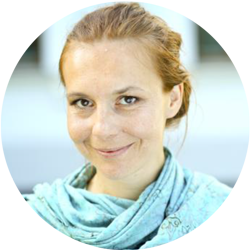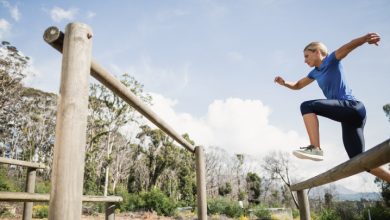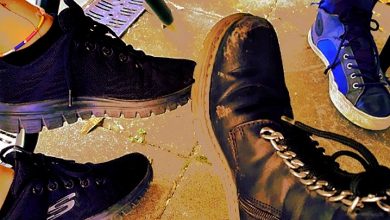Project Based Learning
In this article you will be invited to design your own project the purpose of which is to create a product, your own method or material that will correspond with your learning to learn capability. It refers to the concept of Project Based Learning (PBL), which is successfully implemented in several institutions in the USA.

Why did I choose this tool?
Project Based Learning (PBL) is a powerful tool of empowerment and fostering innovation in a chosen field. The learner can observe the direct connections of gained knowledge and the impact that this knowledge could have on the environment and the community.
How does this apply to being a trainer?
In an environment of trainers, quite often we invite trainees to take part in the experiential learning in order to provide particular competencies to them. Project based learning is a step further; it empowers the learner to build a prototype, an innovation that could interfere within a real setting. Even trainers themselves quite often create small prototypes at particular sessions. Very often they are not paying attention, or are not even aware that it was a significant part of their learning process. With this exercise we invite all learners to go through this process consciously, to analyze steps and to bring a new dimension of learning to the everyday learning process.
Main content:
Project based learning is one of the methods of showing mastery and application of content. It invites the learner to summarize the knowledge and transmit it into a prototype which may change the everyday life of many people.
The projects for learners begin with an issue that interests them or them feeling a need for particular improvement.
When Project Based Learning (PBL) is combined with self-directed learning, learners take ownership of the project in a personally meaningful way (Simkins, Cole, Tavalin & Means, 2002). With greater student engagement, the authentic learning takes place, which can lead to a change in practice.
According to Strobel and van Barneveld (2009) „PBL is significantly more effective than traditional instruction to train competent and skilled practitioners and to promote long-term relation of knowledge and skills acquired during the learning experience or training session”. (p55).
It not only refers to the Kolb Cycle and the concept of ‘learning by doing’, but it also deepens the understanding of a chosen topic and moves the learner from a state of an observer into a state of being an innovator.
Good practice:
The Project Based Learning was implemented and studied in Polk State Collage in the USA. The students of the nursery voluntarily entered the research. Massive effectiveness was proven in their learning.
One of the students, while having an internship in a hospital in the department for elderly and chronically ill patients, after checking the needs of close family members of patients, discovered an urgent need regarding a particular piece of equipment. The student noticed that family members had to leave the room of a dying patient to get some snacks, water, or a hot beverage. The student witnessed several times that in a moment when a family member was out, the patient passed away. That caused great sadness in the person who left only for a moment. The student designed a cabinet equipped with water, snacks, thermoses with hot water, simple games, a book and a notebook with a pen to write the last comments and decisions of the patient. The prototype was accepted and developed as standard equipment in the rooms of this hospital.
The PBL has a positive effect not only on the learner, but also on the environment where the learning is happening.
Exercise:
Create your own ‘learning to learn’ project/prototype:
- Please, address a real issue or problem in terms of ‘learning to learn’ competence. Is there anything that you would like to experience? Is there any knowledge, method, or tool missing? How would you describe this ‘learning to learn’ competence and why is it important?
- Specify your field of interest in terms of learning to learn competence; choose one of the areas:
![]() Identifying & providing appropriate resources to support individual learning,
Identifying & providing appropriate resources to support individual learning,
![]() Assessing one’s own learning achievements & competences,
Assessing one’s own learning achievements & competences,
![]() Identifying learning objectives & pursuing them proactively,
Identifying learning objectives & pursuing them proactively,
![]() Undergoing personal/professional development through feedback,
Undergoing personal/professional development through feedback,
![]() Acknowledging & dealing with unexpected learning moments & outcomes
Acknowledging & dealing with unexpected learning moments & outcomes
![]() Other …
Other …
- Determine the focus of your project.
I would like to create ……………..… because………………. I hope this project in the future can……………………………………………. - Share your idea with several people from the area of your focus.
- Organize a brainstorming session about the possibilities of implementation. Make a draft timeline of the following steps of implementation.
- Create a prototype, and check it in several contexts.
- Describe the final outcomes and what you have learnt.
- Finalize your product and publish it in our trainer’s library, and other resources-sharing platforms.
At each phase please make notes in terms of your own learning (metacognition):
| Phase | Behavior, physical state | Emotions | Critical questions | What helps me to finalize this phase? | What makes this phase difficult? | How to overcome challenges? | Tips to my future self. | Which skill, knowledge, competence I’ve develop right now? |
| Addressing a problem | ||||||||
| Determining the focus | ||||||||
| Consultation | ||||||||
| Implementation plan | ||||||||
| Prototype | ||||||||
| Final product and dissemination |
Reflection questions:
- How would you improve the process of PBL next time?
- Which phase would you like to improve next time?
- How are you satisfied with your project?
- How will you measure the impact?
- What are you going to do next?





